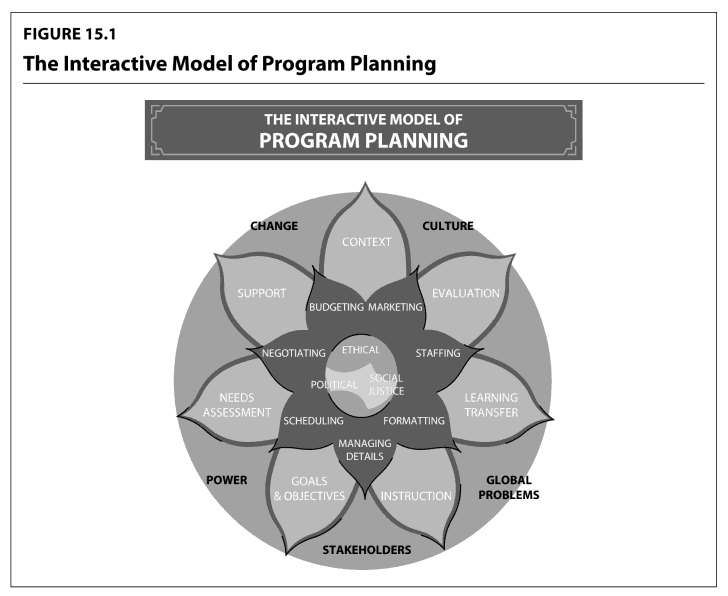Session Design
Step 1: Learning Request
Background:
Why it is Effective:
Helps designer create an effective solution.
Process Steps:
When to Use:
Prior to designing a solution.
Learning Outcomes:
Designer will learn the problem to be solved and the cause of the mismatch between desired and actual performance.
Resources & Samples:
Step 2: Learning Objectives (Outcomes)
Background:
Why it is Effective:
Process Steps:
When to Use:
Prior to designing a solution.
Learning Outcomes:
Designer will learn the desired outcome for the learning experience.
Resources & Samples:
Step 3: Program Design
The organization, and coordination of training/learning experiences including pre-training, the learning event, and post-training generally detailed in a design document that scopes out the project, delivery, and objectives.
Background:
Why it is Effective:
Aids the designer in recalling and capturing the practical tasks and activities necessary for effective program design.
Process Steps:

When to Use:
To organize all learning experiences, even if all components, tasks, and activities are not necessary.
Learning Outcomes:
Resources & Samples:
Step 4: Content Development
Background:
Why it is Effective:
Increases learner engagement, specifically, Wlodkowski & Ginsberg (2017) suggest using motivational strategies as the source for learning activities and to accomplish learning objectives reduces boredom, feelings of constraint, meaninglessness, lack of interest and challenge.
Process Steps:
When to Use:
As wanted to help learners become more aware and more proficient.
Learning Outcomes:
“…deeper understanding, more refined thinking, more complex perceptions, better performance, high goal attainment, new knowledge, and improved skills.” (Wlodkowski & Ginsbeg, 2017)
Resources & Samples:
References
BrainyMedia, Inc. (2023, February, 9). Pablo Picasso Quotes. BrainyQuote. https://www.brainyquote.com/quotes/pablo_picasso_120939
Brown, A.H., & Greenm T.D. (2020). The Essentials of Instructional Design Connecting Fundamental Principles with Process and Practice (4th ed.). Routledge.
Caffarella, R.S., & Daffron, S.R. (2021). Planning Programs for Adult Learners: A Practical Guide (4th ed.). Jossey-Bass.
Davis, B. D., & Arend, J. D. (2013). Facilitating Seven Ways of Learning. Stylus Publishing, LLC.
Wlodkowski, R.J., & Ginsberg, M.B. (2017). Enhancing Adult Motivation to Learn (4th ed.). Jossey-Bass.